How will recovery shape up? Post-lockdown economic scenarios: Kemp
Article content
LONDON — Predicting the shape of recovery after a downturn in the business cycle is a favorite parlor game for economists and the coronavirus-induced plunge in business activity has resurrected the usual range of options.
Some forecasters see a fairly rapid and complete recovery once the lockdowns are lifted (V-shaped) while others see a delayed upturn (U-shaped) or a stuttering period of recoveries and renewed downturns (W-shaped).
More ambitious forecasters have raided the semiotic catalog to propose recoveries shaped like a check-mark, a square root sign or a Nike Swoosh.
But the most likely outcome for both the economy and the oil market is an initial fast-but-partial recovery followed by a slower and more difficult phase.
If that proves to be the case, the expansion will look a lot like the one after the recession in 2008/09 – which saw rapid growth in late 2009 and early 2010, followed by more disappointing and uneven performance in 2011/12.
CALLING RECESSION
“During a recession, a significant decline in economic activity spreads across the economy and can last from a few months to more than a year,” the U.S. National Bureau of Economic Research says.
NBER is a private sector organization rather than a government agency but its business cycle dating committee has become the commonly-accepted arbiter of the business cycle in the United States.
The committee normally waits until the existence of a peak or trough is not in doubt and it can assign an accurate peak or trough date.
For this reason, the onset of a recession or recovery is often announced many months after it occurred, in some cases more than a year later.
The last recession started in December 2007 but it was not announced for another 11 months. The last recovery started in June 2009 but was not announced for 15 months.
In some ways, the recent slump in business activity is much easier to date. Most indicators show U.S. activity was still expanding in February but fell sharply in March and even more severely in April.
Coronavirus-induced lockdowns abruptly cut off an expansion that was very mature (128 months) but still appeared to have reasonable underlying momentum (https://tmsnrt.rs/3caK1ZY).
February (or possibly March) marked the peak of the expansion as well as the onset of the contraction on the standard definition.
UNUSUAL DOWNTURN
The trickier question is whether the sudden slump in business activity qualifies as a recession at all, or is something else.
The slump in March/April certainly qualifies as “a significant decline in economic activity,” the most significant one since the 1930s.
But the second part of the definition talks about a decline that “spreads across the economy” and it is less obvious that this is a good description of what happened in March and April.
Recessions are transmitted through an economy as a downturn in business activity, incomes and employment spreads, like an epidemic, from a few households to a wider section of society.
Recessions are normally characterized by second, third and subsequent rounds of business closures, income declines and employment losses as the initial shock is transmitted and amplified.
Like epidemics, recessions are social phenomena, in which the initial shock (or infection) spreads and accelerates through the links between firms and households.
Recessions are therefore social processes in which expectations and narratives play a critical role, which distinguishes them from single or complex events such as natural disasters (earthquakes) and manmade catastrophes (war).
But that is not a good description of what happened in March and April when many businesses were ordered to cease operating as part of virus-control measures.
If the current downturn does qualify as a recession, rather than something else, then it is very different from the recession of 2008/09 or any other recession for a hundred years.
ECONOMIC DISTANCING
The characterisation of the events of March and April matters because it will determine what happens next in the business cycle.
If it was simply a pause in business activity, the economy might bounce back quickly. The downturn turn out to be one of the deepest but also the shortest on record, and might not even qualify as a proper recession.
In one extreme example, the level of activity might have peaked in February, declined in March, reached a trough in April, before starting to rise again in May as the lockdown is relaxed and at least some businesses re-open.
On the standard definitions, the recession would have started in February and be over in April, making it just two months long (one reason why this downturn does not fit the normal recession template).
The economy went into the downturn with unprecedented speed. Perhaps it will emerge with equal rapidity.
Policymakers are hoping for an outcome something like this. Finance ministries and central banks have provided unprecedented support to businesses and employees in the hope of preventing lingering damage.
Policies have been explicitly designed to put the economy into hibernation or a low-energy state to protect it from lasting harm while the epidemic is suppressed, allowing it to be revived quickly afterwards.
By providing exceptional support, without the normal conditionality, governments are trying to break the social linkages and dependencies through which a recession propagates.
While public health authorities are trying to contain the epidemic through social-distancing, financial authorities are trying to avert a recession through a form of economic distancing.
In this strategy, massive lending and income support is being used to loosen the normally tight relationship between business turnover and the state of the economy, and between employment and household expenditure.
REVERSING LOCKDOWN
If the strategy is successful, business activity could be reactivated quickly, within a few months, which would make this an exceptionally brief downturn.
However, for the economic impact of the lockdowns to be quickly and completely reversible, there must be minimal second-round effects on business activity, and few lasting changes in income and spending patterns.
Governments must be successful in severing the web of business-employment-income-spending linkages in the economy, and the post-lockdown economy must look very much like the pre-lockdown one.
In practice, neither of these conditions is likely to be met, which suggests there could be some significant lingering effects from the lockdowns even once they are progressively lifted.
The longer the lockdowns lasts, the greater the risk of second-round effects on business activity. The more social-distancing required in the post-lockdown world, the greater the painful structural changes.
As lockdowns ease, some effects will be quickly reversed, but others will be much harder to turn back. Some employees currently on furlough will return to work, others are likely to find themselves unemployed.
Some businesses will re-open quickly and completely with little change to turnover. Others will re-open only slowly and incompletely, taking months or years to rebuild. Some will not re-open at all.
MULTI-PHASE RECOVERY
The recovery is likely to be characterized by multiple phases.
The first re-opening phase will see strong and rapid growth as some businesses reverse the lockdown and reactivate fully or partially, which will translate into rapid increases in petroleum consumption.
But at the end of that first phase, business activity and oil use will still be well below pre-lockdown levels; some businesses will be running under capacity or not at all, and some furloughed workers will be unemployed.
Once the first phase is completed, which is likely to be a matter of months, the second rebuilding phase is likely to see slower and more uneven growth.
The second phase will see businesses and households that have been hit by second-round effects on turnover and employment trying to reconstruct their position.
Rebuilding is tougher than re-opening, and these businesses and households will need much greater support for a longer period.
Even if the recovery starts quickly, economic activity and oil consumption could remain below pre-epidemic levels for an extended period well into 2021 or even 2022. (Editing by Barbara Lewis)
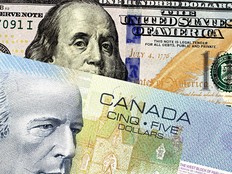
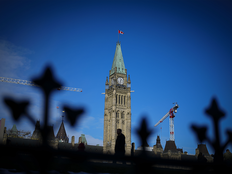
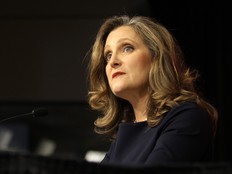
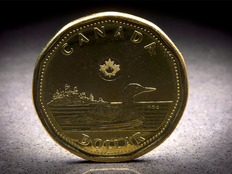
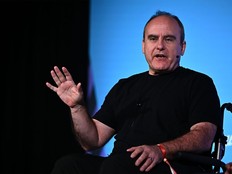

Postmedia is committed to maintaining a lively but civil forum for discussion. Please keep comments relevant and respectful. Comments may take up to an hour to appear on the site. You will receive an email if there is a reply to your comment, an update to a thread you follow or if a user you follow comments. Visit our Community Guidelines for more information.